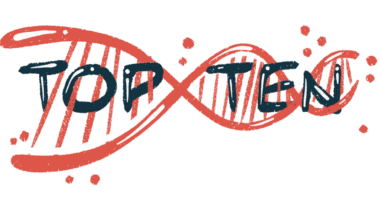The Benefits of Coming Out Crip as Someone With Duchenne MD
How crip time has helped me navigate life's challenges

Note: This column includes thoughts about suicide. Resources for help are listed at the end of the column.
I delivered my first research presentation at the College of Alice & Peter Tan (CAPT) at the National University of Singapore (NUS) on Sept. 17. In March, my favorite lecturer from my college days reached out to introduce me to a master’s student who works as a research assistant at CAPT. Shortly afterward, the assistant invited me to be a panelist and speaker at this year’s CAPT Research Forum, and I accepted.
For my speaker contribution, I applied the practice of “cripping” to Singapore’s disability inclusion movement. The term was coined by critical disability scholar Carrie Sandahl in her 2003 article “Queering the Crip or Cripping the Queer?,” which was published in GLQ: A Journal of Lesbian and Gay Studies. In it, Sandahl writes, “Cripping spins mainstream representations or practices to reveal able-bodied assumptions and exclusionary effects.” In other words, to crip something means to apply a disability justice lens to normative cultures, practices, and systems.
Singapore’s disability inclusion movement is problematic because nondisabled folks spearhead it. Last year, Victor Zhuang, a disability studies scholar at the University of Illinois, Chicago, argued in his doctorate thesis that in conservative Singapore, disability discourse and opinion have largely been dominated by nondisabled politicians, who have authority and power over the marginalized and vulnerable disabled minority.
In my experience, most Singaporean people recognize that disability inclusion is essential to our nation’s progress as our population rapidly ages. Yet few seem concerned that the mainstream has erased disabled voices. That’s why, as a disability justice advocate, my goal is to crip this movement.
During my presentation, I also spoke about crip theory, a term coined by renowned disability academic Robert McRuer in 2006. Crip theory refers to the analytical framework of compulsory able-bodiedness, in which much of a society assumes that existing without any form of disability is the natural order of things.
The part of my presentation most pertinent to my personal life was the idea of crip time, as described by feminist, queer, and disability scholar Alison Kafer in her 2013 book “Feminist, Queer, Crip.” Crip time refers to the relationship between disability and the concept of time as both a lived reality and a social creation. It addresses how time works differently in the lives of disabled people.
With Duchenne muscular dystrophy, or “Duke,” as my best friend, crip time has given me hope as I face mental health struggles. How so, you may be wondering? In Kafer’s words, crip time is best understood as a constructive critique of mainstream expectations of what it means to live well and be successful. Rather than attempting to fit disabled people into traditional systems built around businesslike efficiency and productivity, crip time meets me where I am.
To me, crip time is not only about learning to slow down in accordance with my declining physical condition and practicing the art of survival by patiently enduring life’s trials. It’s also about persevering in hope toward a brighter future and better world for us all.
My brother’s passing two years ago left a gaping hole in my heart that I can never hope to fill. I’d always wanted to be his caregiver, despite us sharing the same disability. His death plunged me into an emotional abyss and endless spiral of existential crises that caused me to question my identity and purpose in life. Coupled with the religious trauma that I experienced shortly before I lost him, where a counselor suggested that my disability was a demonic curse that needed to be prayed away at all costs, I’ve seriously considered ending my life on multiple occasions.
But crip time enabled me to take stock of my life, reflect on the pain and ghosts of my harrowing past, and develop self-compassion. Reorienting my priorities toward living life to the fullest has empowered me to revisit my early childhood experiences and rediscover parts of myself that I’d buried beyond the furthest reaches of my soul. Through this process, I got to know the person I’ve always been.
None of this would’ve been possible had I not been disabled for two decades and had Duke in my life. I am proud to be called crip, as this is who I truly am.
If you are struggling with thoughts of suicide, please contact the Suicide Prevention Lifeline in the U.S. (988, or 988lifeline.org, available 24/7), Samaritans in the U.K (samaritans.org), or Samaritans of Singapore in Singapore (sos.org.sg).
Note: Muscular Dystrophy News is strictly a news and information website about the disease. It does not provide medical advice, diagnosis, or treatment. This content is not intended to be a substitute for professional medical advice, diagnosis, or treatment. Always seek the advice of your physician or another qualified health provider with any questions you may have regarding a medical condition. Never disregard professional medical advice or delay in seeking it because of something you have read on this website. The opinions expressed in this column are not those of Muscular Dystrophy News or its parent company, Bionews, and are intended to spark discussion about issues pertaining to muscular dystrophy.








Leave a comment
Fill in the required fields to post. Your email address will not be published.